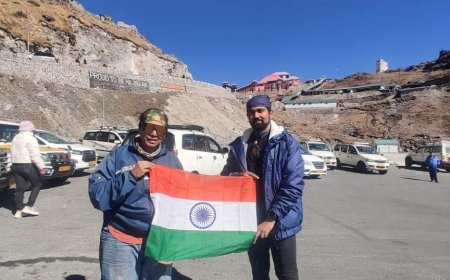Anxiety Disorders

Introduction
Anxiety disorders are serious medical illnesses that affect approximately 19 million American adults. These disorders fill people's lives with overwhelming anxiety and fear. Unlike the relatively mild, brief anxiety caused by a stressful event such as a business presentation or a first date, anxiety disorders are chronic, relentless, and can grow progressively worse if not treated.
Effective treatments for anxiety disorders are available, and research is yielding new, improved therapies that can help most people with anxiety disorders lead productive, fulfilling lives. If you think you have an anxiety disorder, you should seek information and treatment.
This brochure will
• help you identify the symptoms of anxiety disorders,
• explain the role of research in understanding the causes of these conditions,
• describe effective treatments,
• help you learn how to obtain treatment and work with a doctor or therapist, and
• suggest ways to make treatment more effective.
The anxiety disorders discussed in this brochure are
• panic disorder,
• obsessive-compulsive disorder,
• post-traumatic stress disorder,
• social phobia (or social anxiety disorder),
• specific phobias, and
• generalized anxiety disorder.
Each anxiety disorder has its own distinct features, but they are all bound together by the common theme of excessive, irrational fear and dread.
The National Institute of Mental Health (NIMH) supports scientific investigation into the causes, diagnosis, treatment, and prevention of anxiety disorders and other mental illnesses. The NIMH mission is to reduce the burden of mental illness through research on mind, brain, and behavior. NIMH is a component of the National Institutes of Health, which is part of the U.S. Department of Health and Human Services.
Panic Disorder
"It started 10 years ago, when I had just graduated from college and started a new job. I was sitting in a business seminar in a hotel and this thing came out of the blue. I felt like I was dying.
"For me, a panic attack is almost a violent experience. I feel disconnected from reality. I feel like I'm losing control in a very extreme way. My heart pounds really hard, I feel like I can't get my breath, and there's an overwhelming feeling that things are crashing in on me.
"In between attacks there is this dread and anxiety that it's going to happen again. I'm afraid to go back to places where I've had an attack. Unless I get help, there soon won't be anyplace where I can go and feel safe from panic."
People with panic disorder have feelings of terror that strike suddenly and repeatedly with no warning. They can't predict when an attack will occur, and many develop intense anxiety between episodes, worrying when and where the next one will strike.
If you are having a panic attack, most likely your heart will pound and you may feel sweaty, weak, faint, or dizzy. Your hands may tingle or feel numb, and you might feel flushed or chilled. You may have nausea, chest pain or smothering sensations, a sense of unreality, or fear of impending doom or loss of control. You may genuinely believe you're having a heart attack or losing your mind, or on the verge of death.
Panic attacks can occur at any time, even during sleep. An attack generally peaks within 10 minutes, but some symptoms may last much longer.
Panic disorder affects about 2.4 million adult Americans 1 and is twice as common in women as in men. It most often begins during late adolescence or early adulthood. 2 Risk of developing panic disorder appears to be inherited. Not everyone who experiences panic attacks will develop panic disorder—for example, many people have one attack but never have another. For those who do have panic disorder, though, it's important to seek treatment. Untreated, the disorder can become very disabling.
Many people with panic disorder visit the hospital emergency room repeatedly or see a number of doctors before they obtain a correct diagnosis. Some people with panic disorder may go for years without learning that they have a real, treatable illness.
Panic disorder is often accompanied by other serious conditions such as depression, drug abuse, or alcoholism and may lead to a pattern of avoidance of places or situations where panic attacks have occurred. For example, if a panic attack strikes while you're riding in an elevator, you may develop a fear of elevators. If you start avoiding them, that could affect your choice of a job or apartment and greatly restrict other parts of your life.
Some people's lives become so restricted that they avoid normal, everyday activities such as grocery shopping or driving. In some cases they become housebound. Or, they may be able to confront a feared situation only if accompanied by a spouse or other trusted person.
Basically, these people avoid any situation in which they would feel helpless if a panic attack were to occur. When people's lives become so restricted, as happens in about one-third of people with panic disorder, the condition is called agoraphobia . Early treatment of panic disorder can often prevent agoraphobia.
Panic disorder is one of the most treatable of the anxiety disorders, responding in most cases to medications or carefully targeted psychotherapy.
You may genuinely believe you're having a heart attack, losing your mind, or are on the verge of death. Attacks can occur at any time, even during sleep.
Depression
Depression often accompanies anxiety disorders and, when it does, it needs to be treated as well. Symptoms of depression include feelings of sadness, hopelessness, changes in appetite or sleep, low energy, and difficulty concentrating. Most people with depression can be effectively treated with antidepressant medications, certain types of psychotherapy, or a combination of both.
Obsessive-Compulsive Disorder
"I couldn't do anything without rituals. They invaded every aspect of my life. Counting really bogged me down. I would wash my hair three times as opposed to once because three was a good luck number and one wasn't. It took me longer to read because I'd count the lines in a paragraph. When I set my alarm at night, I had to set it to a number that wouldn't add up to a "bad" number.
"Getting dressed in the morning was tough because I had a routine, and if I didn't follow the routine, I'd get anxious and would have to get dressed again. I always worried that if I didn't do
something, my parents were going to die. I'd have these terrible thoughts of harming my parents. That was completely irrational, but the thoughts triggered more anxiety and more senseless behavior. Because of the time I spent on rituals, I was unable to do a lot of things that were important to me.
"I knew the rituals didn't make sense, and I was deeply ashamed of them, but I couldn't seem to overcome them until I had therapy."
Obsessive-compulsive disorder, or OCD, involves anxious thoughts or rituals you feel you can't control. If you have OCD, you may be plagued by persistent, unwelcome thoughts or images, or by the urgent need to engage in certain rituals.
You may be obsessed with germs or dirt, so you wash your hands over and over. You may be filled with doubt and feel the need to check things repeatedly. You may have frequent thoughts of violence, and fear that you will harm people close to you. You may spend long periods touching things or counting; you may be pre-occupied by order or symmetry; you may have persistent thoughts of performing sexual acts that are repugnant to you; or you may be troubled by thoughts that are against your religious beliefs.
The disturbing thoughts or images are called obsessions, and the rituals that are performed to try to prevent or get rid of them are called compulsions. There is no pleasure in carrying out the rituals you are drawn to, only temporary relief from the anxiety that grows when you don't perform them.
A lot of healthy people can identify with some of the symptoms of OCD, such as checking the stove several times before leaving the house. But for people with OCD, such activities consume at least an hour a day, are very distressing, and interfere with daily life.
Most adults with this condition recognize that what they're doing is senseless, but they can't stop it. Some people, though, particularly children with OCD, may not realize that their behavior is out of the ordinary.
OCD afflicts about 3.3 million adult Americans. It strikes men and women in approximately equal numbers and usually first appears in childhood, adolescence, or early adulthood. One-third of adults with OCD report having experienced their first symptoms as children. The course of the disease is variable—symptoms may come and go, they may ease over time, or they can grow progressively worse. Research evidence suggests that OCD might run in families.
Depression or other anxiety disorders may accompany OCD, and some people with OCD also have eating disorders. In addition, people with OCD may avoid situations in which they might have to confront their obsessions, or they may try unsuccessfully to use alcohol or drugs to calm themselves. If OCD grows severe enough, it can keep someone from holding down a job or from carrying out normal responsibilities at home.
OCD generally responds well to treatment with medications or carefully targeted psychotherapy.
The disturbing thoughts or images are called obsessions, and the rituals performed to try to prevent or get rid of them are called compulsions. There is no pleasure in carrying out the rituals you are drawn to, only temporary relief from the anxiety that grows when you don't perform them.
What's Your Reaction?




































































































